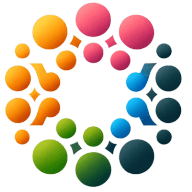4 How Leaders Can Champion Inclusion in Remote and Hybrid Teams
Navigating the nuances of remote and hybrid team management demands a thoughtful approach to inclusion. This article distills expert advice into actionable strategies that empower leaders to foster a culture of open communication and equal opportunity. Discover how structured check-ins, diverse facilitation, and recognition of team achievements can transform your team dynamics.
- Foster Open Communication Through Structured Check-ins
- Implement Rotating Facilitation for Diverse Perspectives
- Showcase Team Member Achievements Monthly
- Organize Voice-sharing Meetings to Flatten Hierarchy
Foster Open Communication Through Structured Check-ins
One of the most effective ways leaders can champion equity and inclusion in remote or hybrid teams is by fostering open communication and ensuring every team member feels heard and valued. A practice I've personally found impactful is implementing structured check-ins that go beyond just work updates. By creating a space where employees can discuss their challenges, needs, and perspectives, leaders can identify barriers to inclusion and take action. With over 30 years of experience in both private practice and large multidisciplinary clinics, I've learned that small changes in how we engage with team members can have a profound impact on morale and performance. For example, at The Alignment Studio, I introduced monthly one-on-one meetings with every team member, where we discuss not only professional growth but also their well-being and any obstacles they may be facing in a hybrid work environment. This has allowed us to make meaningful adjustments, whether it's providing additional training, adjusting workloads, or improving communication structures.
One instance where this approach made a significant difference was when a team member who was working remotely felt disconnected and struggled with a sense of belonging. During a check-in, they shared their concerns about missing out on spontaneous collaboration and mentorship opportunities. Drawing from my experience in leadership roles at The University of NSW and The Mater Hospital, I implemented a structured mentorship rotation where team members both remote and in-person are paired for regular knowledge sharing sessions. This not only improved inclusion but also strengthened professional development across the team. The result was a more cohesive and engaged workforce where everyone, regardless of location, felt valued and supported. By taking a proactive and intentional approach to inclusion, leaders can ensure all team members thrive, no matter where they work.

Implement Rotating Facilitation for Diverse Perspectives
In today's evolving workplace, fostering equity and inclusion requires intentional effort, especially in remote and hybrid settings where teams may feel disconnected. As a resilience and leadership coach, I guide leaders to implement strategies that create a psychologically safe and inclusive culture, ensuring every team member feels valued and empowered.
One impactful practice I've found highly effective is structured well-being check-ins. Many high-achieving professionals, particularly women, face unique challenges balancing productivity with personal well-being. In remote settings, leaders may inadvertently overlook these struggles. To address this, I encourage leaders to integrate regular, intentional check-ins--not just for performance updates, but to understand the individual experiences of team members.
For example, I worked with a senior executive leading a global team who noticed that women in particular were less vocal in virtual meetings. Through our coaching sessions, we developed a rotating facilitation model, where different team members led discussions. This small shift encouraged diverse perspectives and improved engagement. By combining mental well-being strategies with inclusive leadership practices, the team cultivated an environment where everyone felt heard, leading to increased collaboration and innovation.
True equity and inclusion stem from leadership that actively listens and adapts. In my coaching, I help leaders develop sustainable strategies that nurture belonging and resilience--two pillars essential for high-performing, inclusive teams.

Showcase Team Member Achievements Monthly
At Remote People, we promote equity and inclusion by highlighting the achievements of a different team member each month at our all-hands meetings. By sharing each team member's accomplishments, we show that all employees have opportunities with us, regardless of their gender, race, religion, or other demographics.

Organize Voice-sharing Meetings to Flatten Hierarchy
Championing equity and inclusion in remote or hybrid work environments begins with intentional communication and deliberate efforts to flatten hierarchical structures that can be magnified when team members are physically apart. One particularly impactful practice is to implement regular 'voice-sharing' meetings. These are sessions specifically designed to hear from each team member regarding their experiences and any challenges they face related to inclusivity. These meetings must be well-structured to ensure that everyone has a voice, particularly those who might feel marginalized—whether because of their location, job role, or any other reason.
Additionally, creating a shared digital space where team members can express concerns, share ideas, and celebrate each other's backgrounds and achievements fosters a sense of community and belonging. This practice helps in acknowledging diverse perspectives and allows team leaders to address any unintentional bias or barriers within the team. Succeeding in creating an equitable and inclusive team, particularly in a hybrid or remote setting, requires continuous effort and genuine commitment from leaders. Celebrating team diversity through inclusive practices not only enriches the work culture but also drives innovation and engagement among employees.


